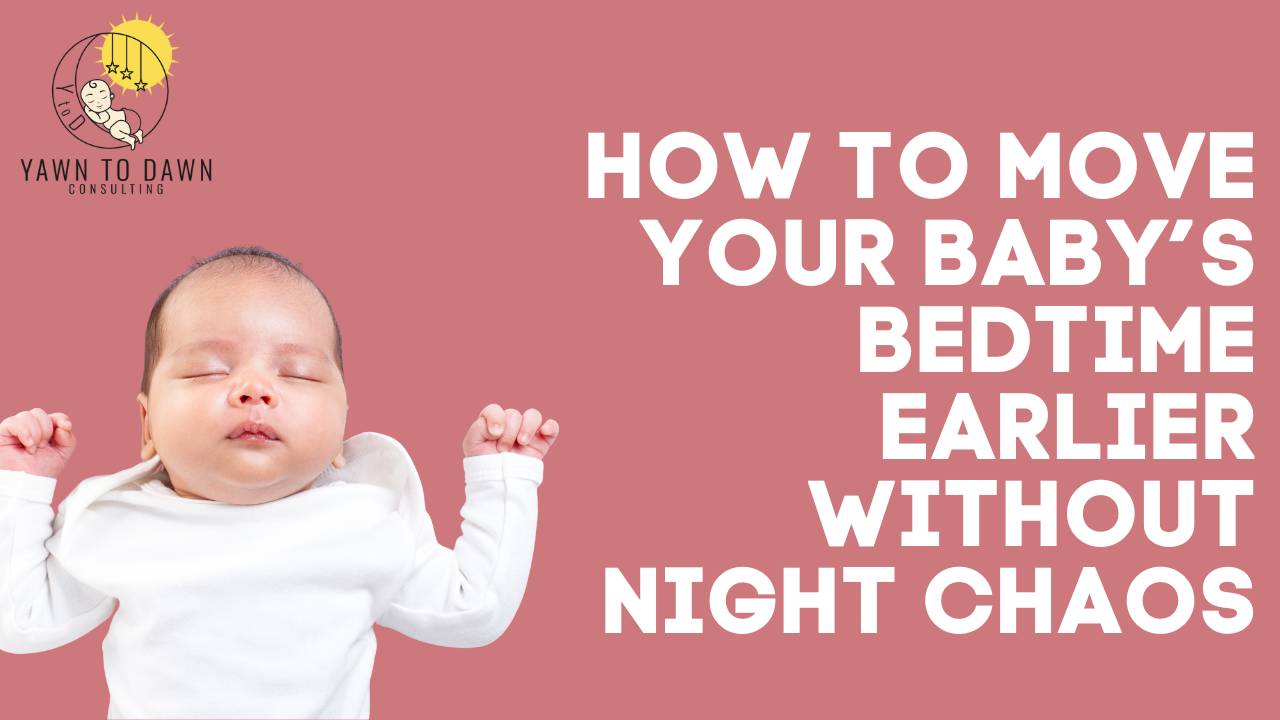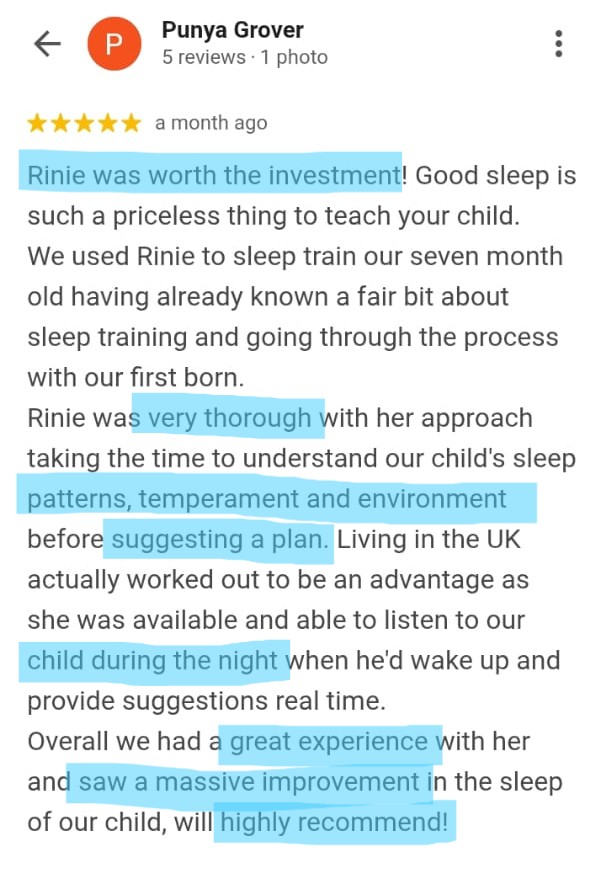How to Move Your Baby’s Bedtime Earlier Without Night Chaos
Nov 18, 2025
If your baby currently falls asleep around midnight, you’re definitely not the only parent facing this challenge. Many families I work with try putting their baby down earlier around 9 PM only to watch them take a short “pretend nap” and then stay awake, alert, and ready to party until 1 or 2 AM. It’s frustrating, exhausting, and confusing, especially when you’re doing everything “right.”
This scenario is one of the most common struggles I see as a pediatric sleep consultant
Hi, I’m Rinie Gupta, certified pediatric sleep consultant and founder of Yawn to Dawn Consulting. I help parents teach their babies and toddlers to fall asleep independently and sleep through the night using gentle, evidence-based sleep training methods that actually work, no overwhelm, no harsh methods, and absolutely no guessing.
Why Putting Your Child to Bed Earlier Doesn’t Work (At First)
When you suddenly decide to move bedtime forward by two or three hours, you’re unknowingly fighting against your baby’s circadian rhythm, the internal biological clock that controls when we feel awake or sleepy.
So when you put your baby down for a much earlier bedtime, their body doesn’t recognize that time as “night sleep.” Instead, it treats that new, earlier bedtime like a late nap. That’s why they sleep for 20–30 minutes, wake up refreshed, and are suddenly ready to play.
Your baby isn’t being difficult. Their body clock simply hasn’t caught up yet.

What to Do Instead: Shift the Clock Slowly
Here’s a gentle, step-by-step plan that works for most families and it doesn’t involve tears, chaos, or forcing your baby into a schedule they’re not ready for.
1. Start where you are
Begin with your baby’s current bedtime.
If they naturally fall asleep at midnight, starting from midnight is not your “ideal bedtime.” Trying to jump too far ahead will trigger resistance.
2. Build a consistent bedtime routine
A predictable, calming routine sends the message:
“It’s time to wind down.”
Aim for a 20–30 minute routine that includes simple steps like:
- a warm bath
- dimming the lights
- reading or singing
- quiet cuddles
This signals your baby’s brain and body to relax.
3. Shift bedtime gradually
Move bedtime earlier by just 15 minutes every 2–3 days.
This small shift is gentle enough that your baby’s body clock can adjust naturally without pushing back or treating bedtime like a nap.
Slow is smooth. Smooth is successful.
4. Adjust mornings and naps
To support the earlier bedtime:
- Wake your baby 15 minutes earlier in the morning.
- Move naps slightly earlier too.
- If needed, shorten the last nap so bedtime doesn’t get pushed later.
These changes work together to reset the sleep clock.
5. Stay in the dark if they wake up
If your baby wakes up early in the transition period, keep the room dark and calm.
Avoid turning on lights or leaving the room.
This helps reinforce that it’s still nighttime and not playtime.
Be Patient It’s Worth It
A shifted bedtime won’t happen overnight but with consistent routines and slow adjustments, most babies naturally move to an earlier schedule within 1–2 weeks.
And that’s when nights finally begin to feel peaceful again.
If your baby is still struggling with short naps, frequent night wakings, or cannot fall asleep without help, it may not just be a timing issue it may be a sleep skills issue.
That’s exactly where professional sleep support can change everything.
👉 Explore my 1:1 Infant & Toddler Sleep Programs to teach your baby how to sleep independently gently and confidently.
You might also like:
- Sleep training 101
- Creating my Baby's Sleep Schedule: How I Found Calm in Chaos
- How to Sleep Train a 6-Month-Old




